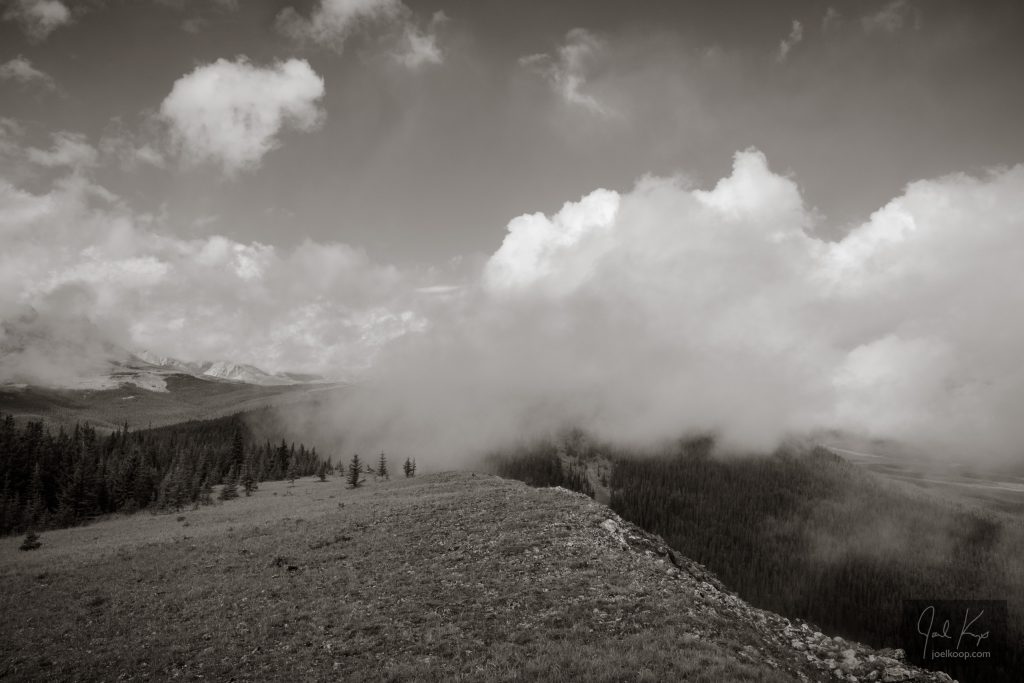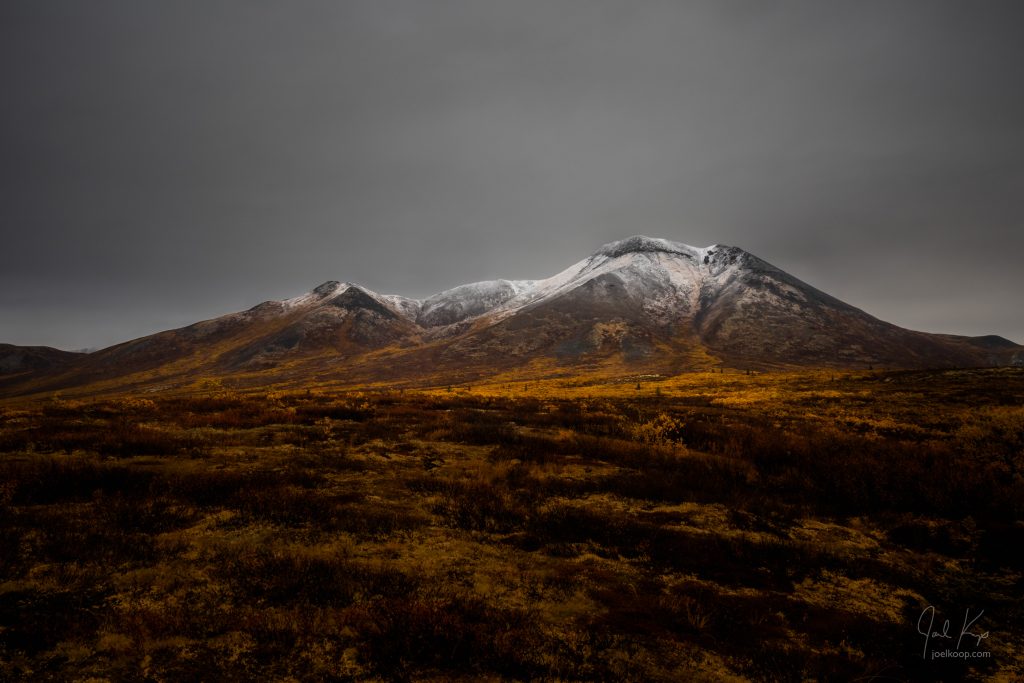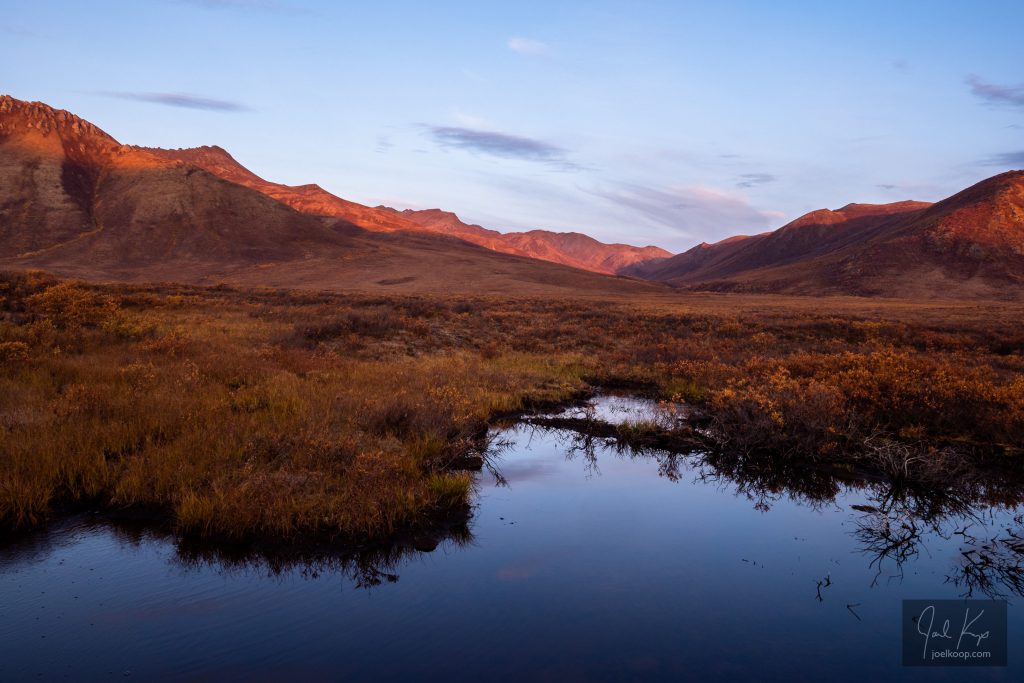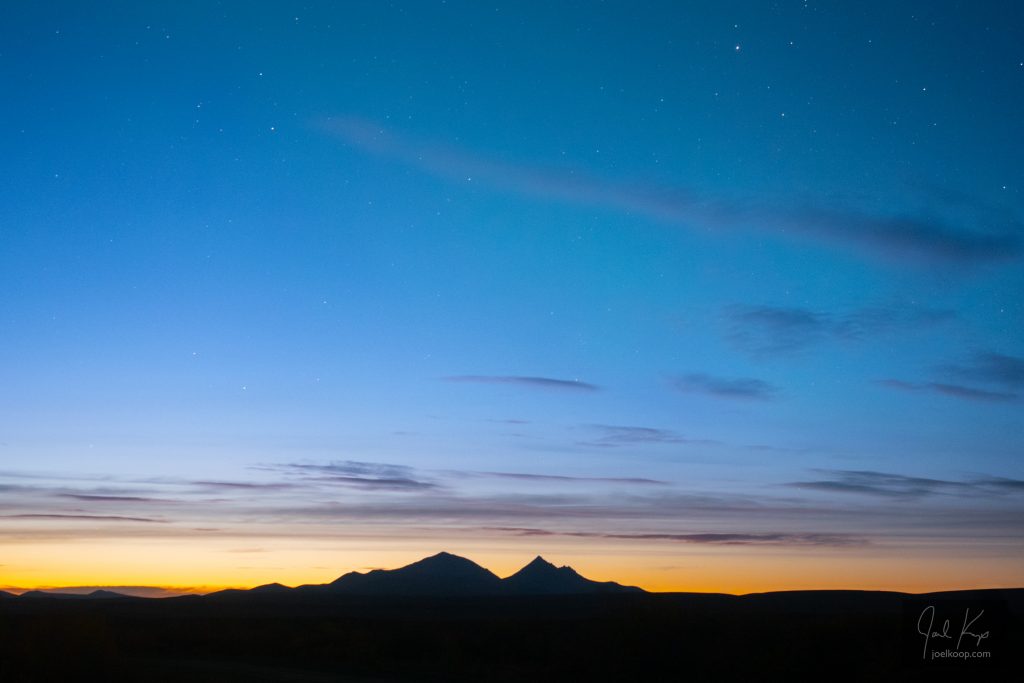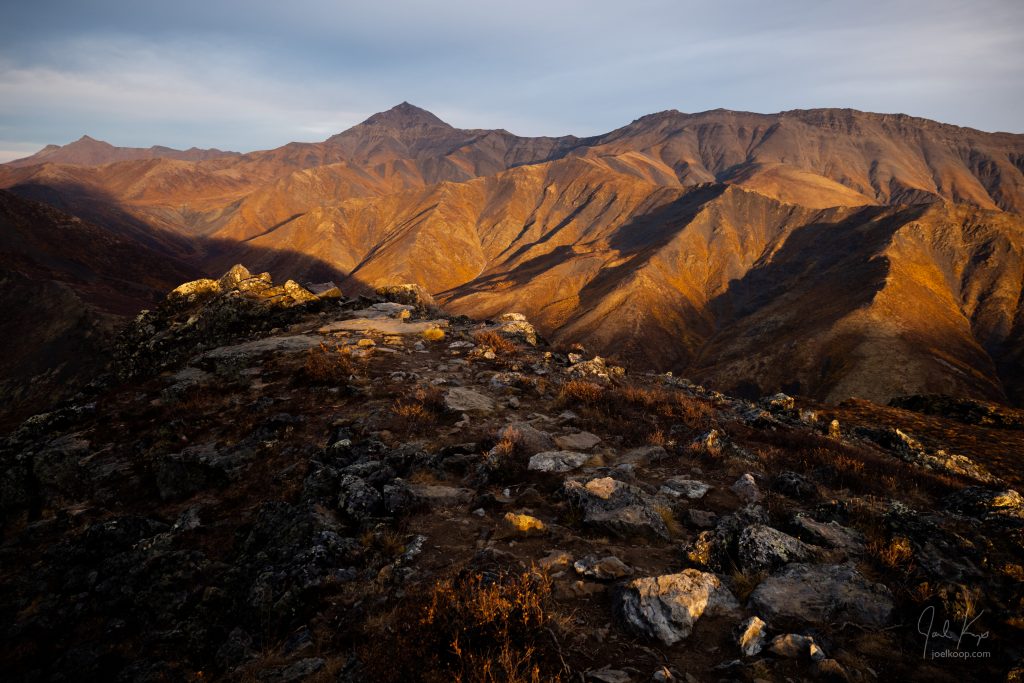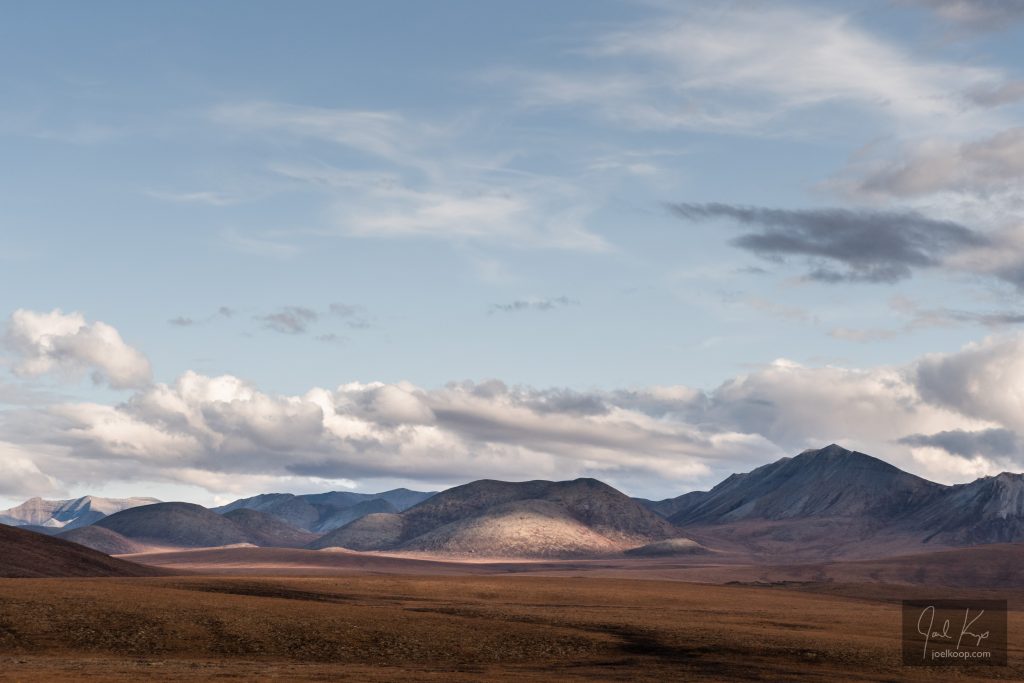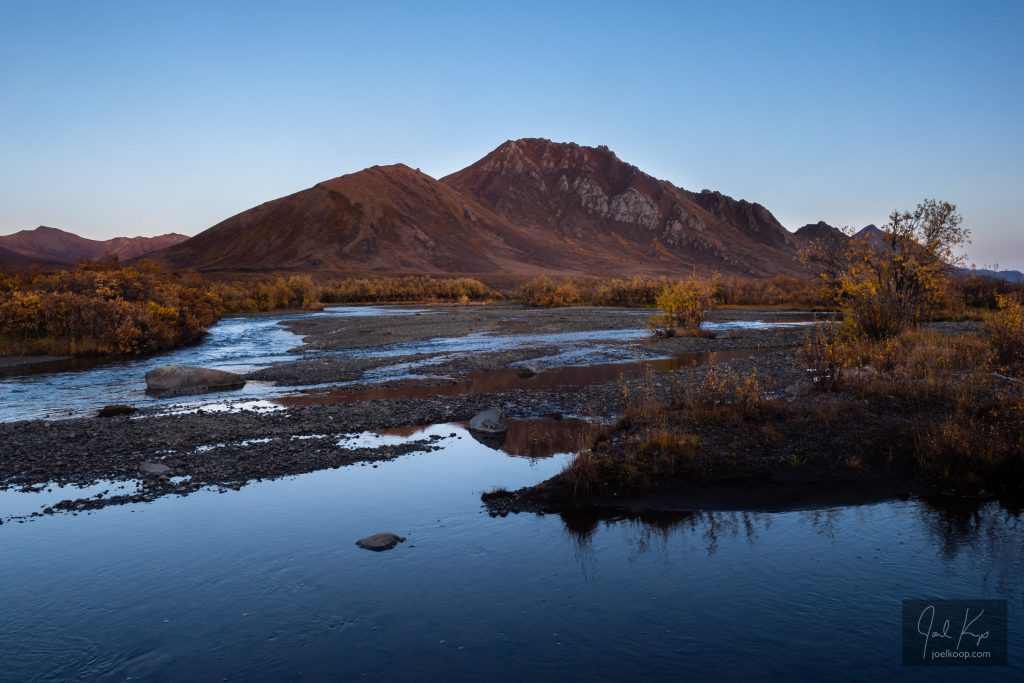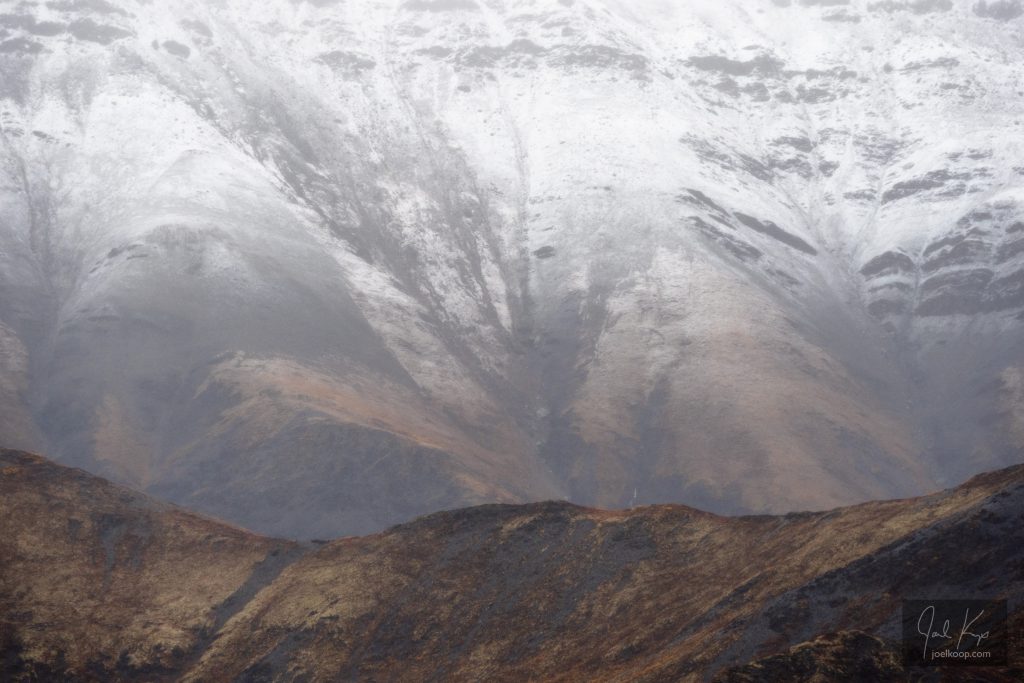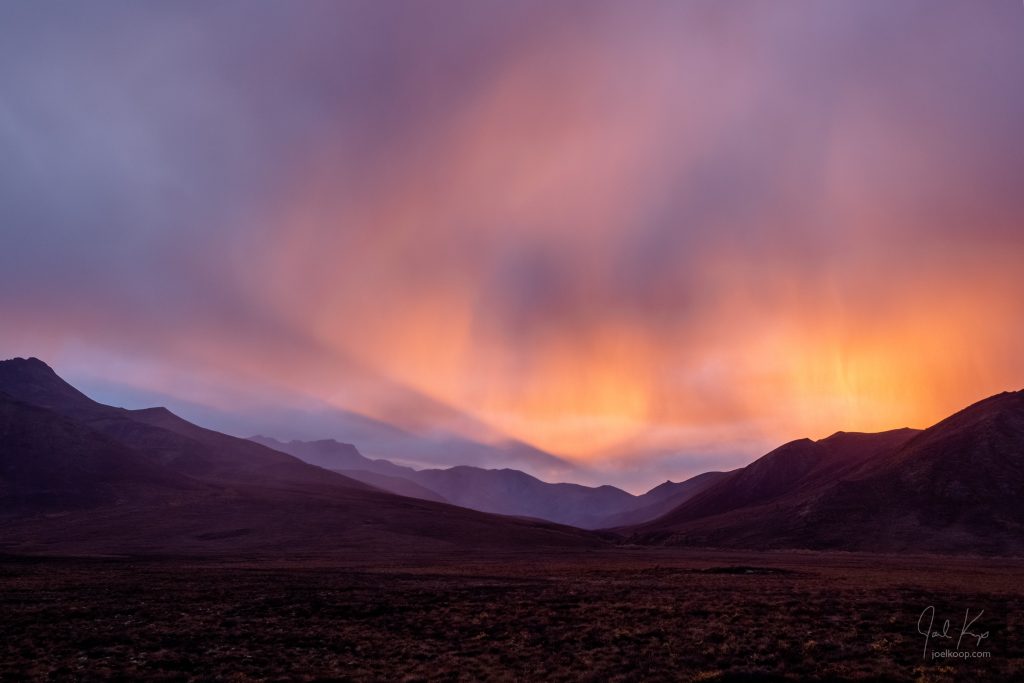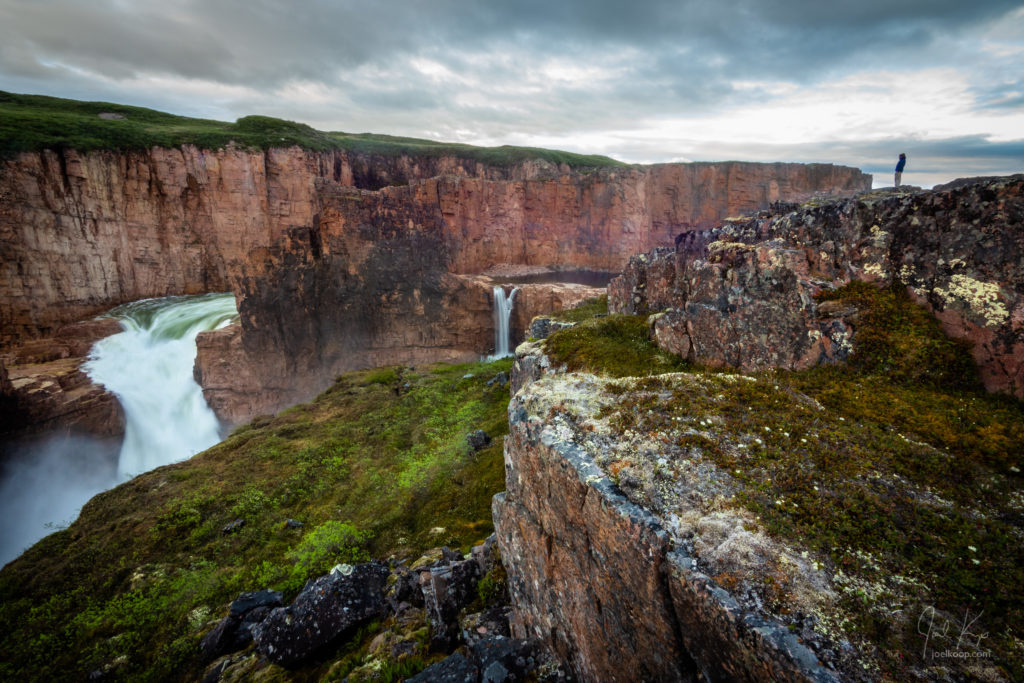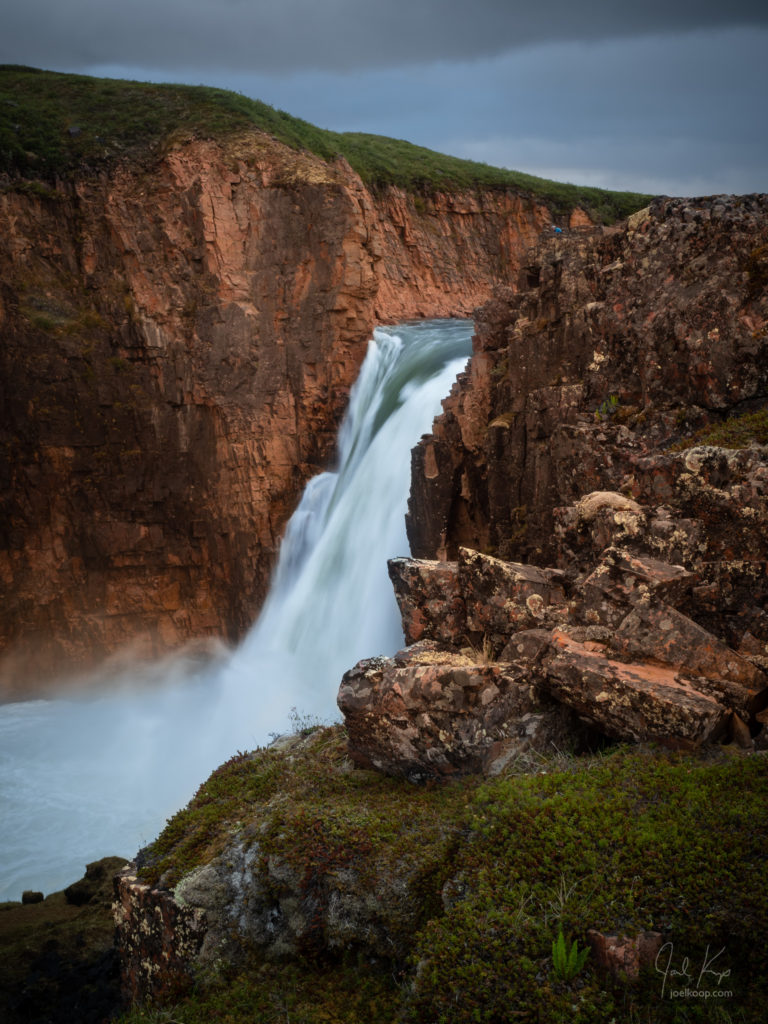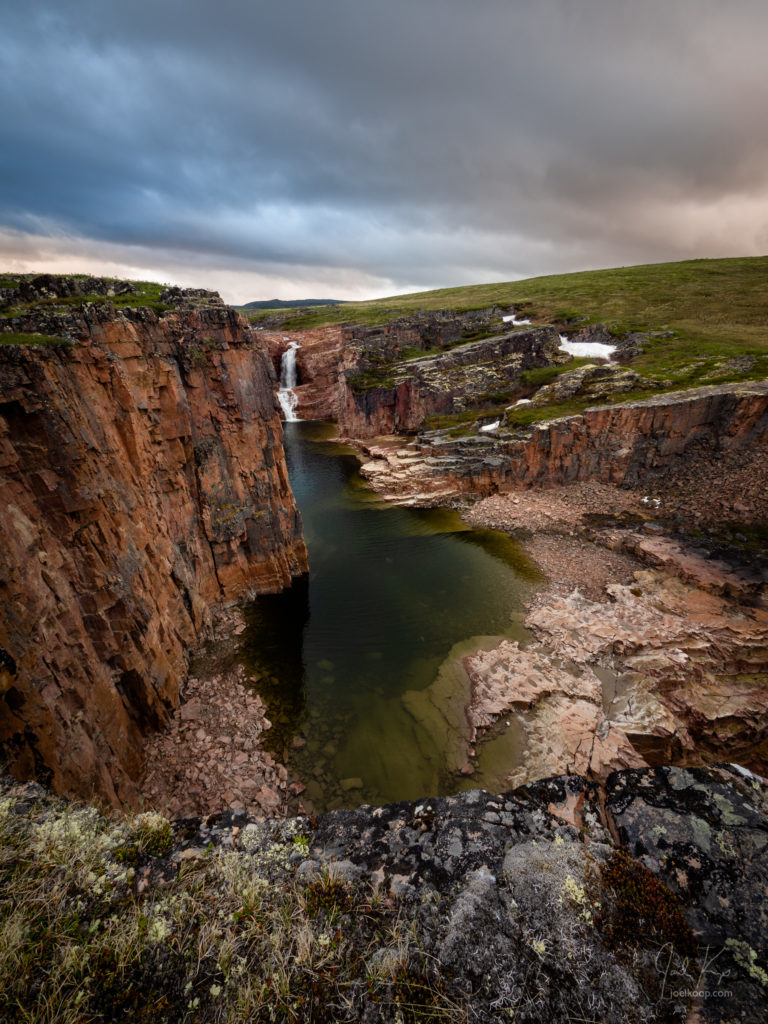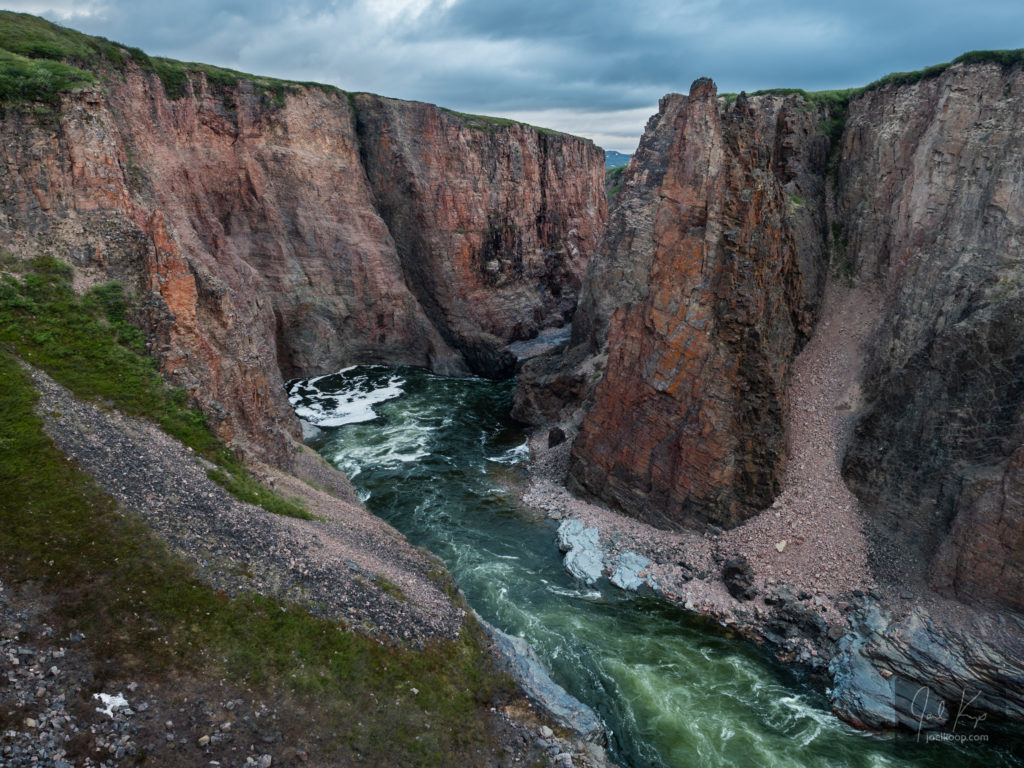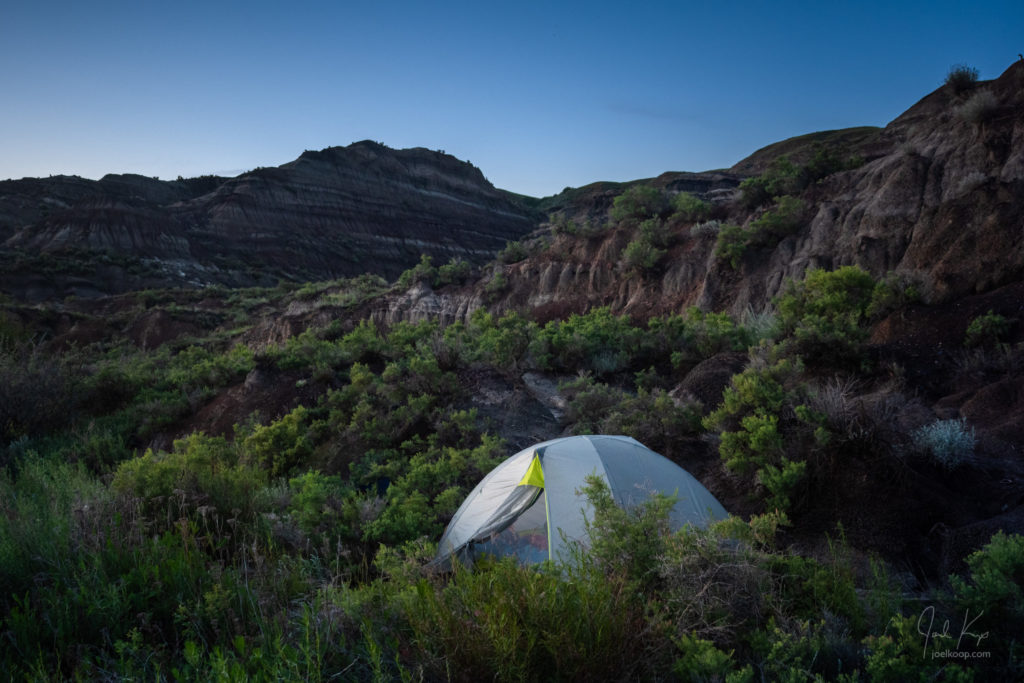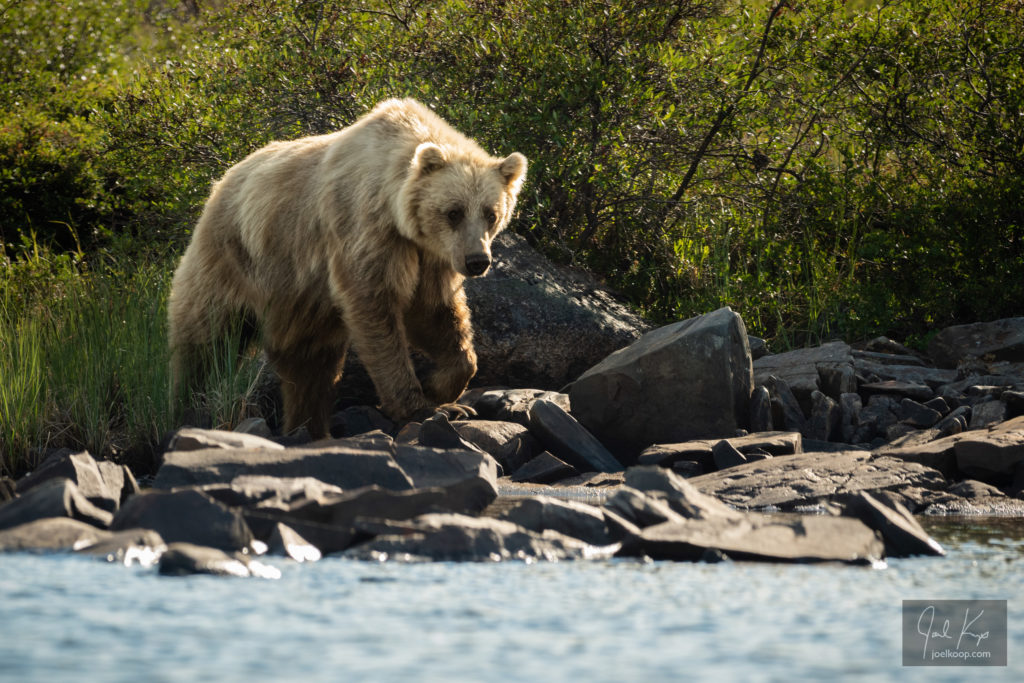
A large muskox on the banks of the Hood River, Nunavut
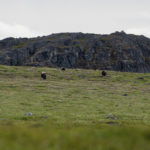 My first glimpse of a muskox was from a canoe on the Hood River. There was a herd of dark specks far away on the gentle slope of the riverbank near the Wright River confluence. We pulled over, went up on shore, and watched them for a while. They were very far away and I don’t know if they ever noticed us.
My first glimpse of a muskox was from a canoe on the Hood River. There was a herd of dark specks far away on the gentle slope of the riverbank near the Wright River confluence. We pulled over, went up on shore, and watched them for a while. They were very far away and I don’t know if they ever noticed us.
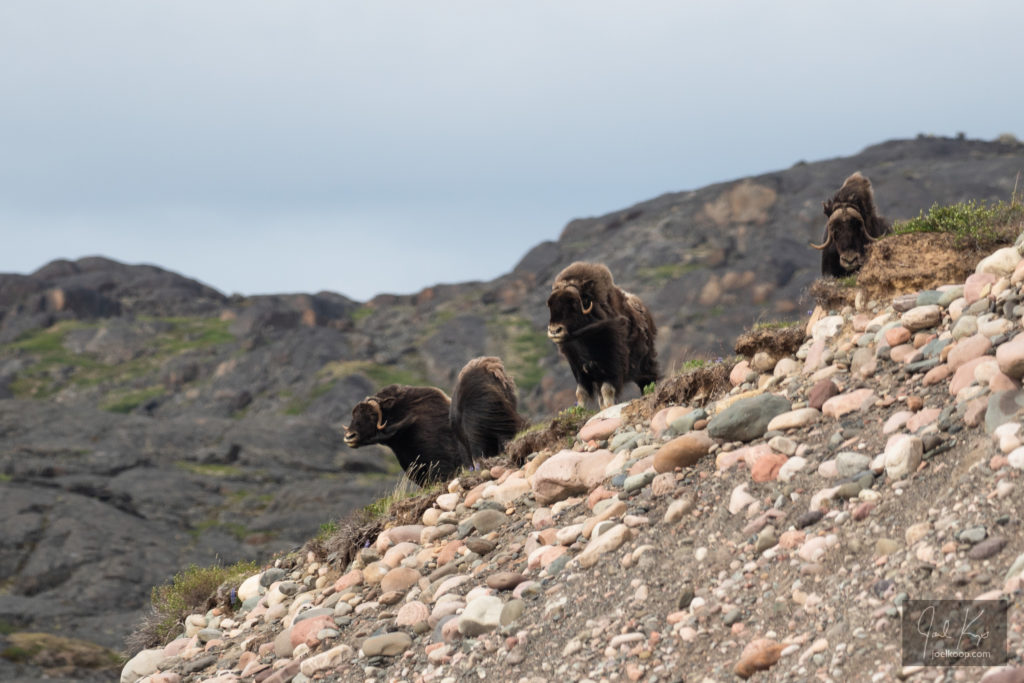
Some of the rest of the herd peering at the strange out-of-place creatures floating on the water.
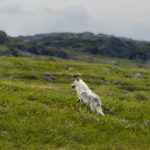
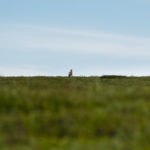 The second time we saw them, we had pulled to the side of the river to check out a promising sandy bank with signs of wolves. At first it looked like the wolves hadn’t been there for a while – the signs were all old. And then, as we were taking one last look around, large white wolf exploded out of the ground just a few feet in front of us. It bounded away until it reached a ridge where it could look back at us and then it started howling. As it was running up the hill, we noticed a herd of muskox grazing on the same ridge. The muskox were keeping an eye on the wolf, but didn’t look too worried.
The second time we saw them, we had pulled to the side of the river to check out a promising sandy bank with signs of wolves. At first it looked like the wolves hadn’t been there for a while – the signs were all old. And then, as we were taking one last look around, large white wolf exploded out of the ground just a few feet in front of us. It bounded away until it reached a ridge where it could look back at us and then it started howling. As it was running up the hill, we noticed a herd of muskox grazing on the same ridge. The muskox were keeping an eye on the wolf, but didn’t look too worried.
These first few photos are from the third time we saw them. We were canoeing through a technical part of the river with lots of rocks, waves, and fast water. They were watching us from high above on a gravel bank, but quite close. We found an eddy (a calmer section of water below something blocking the current) by the shore and watched them for a while from the canoes. The wind was blowing through their long hair and occasionally blowing away parts of their lighter-colored winter coats. Later on in the summer I’d find a lot of this this qiviut (muskox wool) snagged on birch and willow around MacKay Lake. It is one of the warmest, softest, and most expensive fibers you can get.
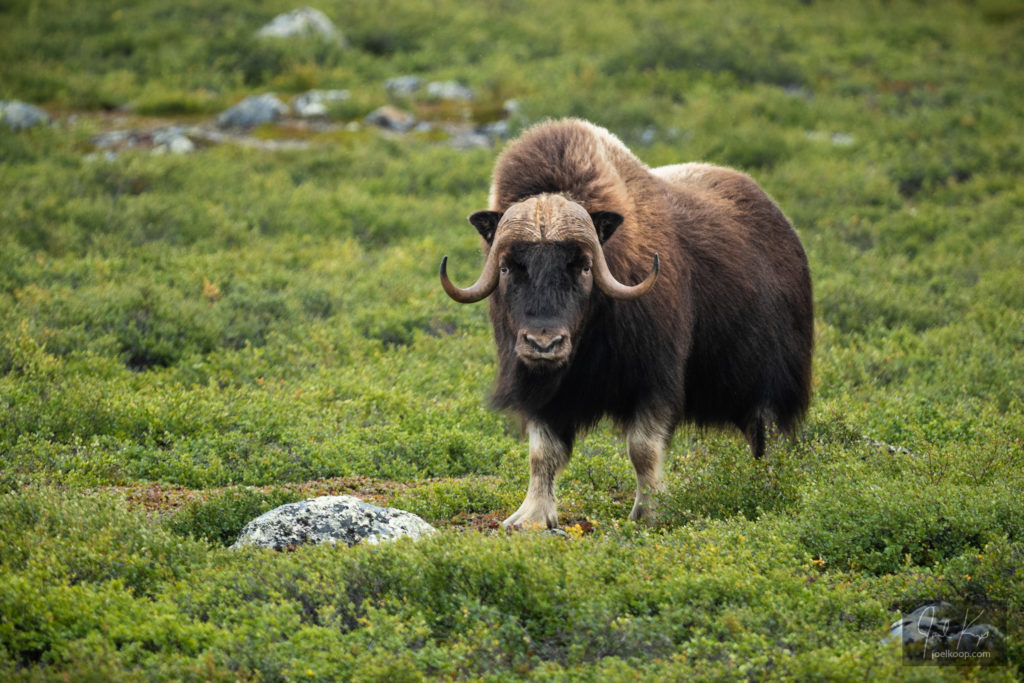
Throughout the summer I saw quite a few muskox, both lone bulls and herds. When a bull gets too uppity and challenges the leadership, they can get kicked out of a herd. We saw a few of these lone bulls roaming around. Once, near MacKay Lake, we were at a research site sampling birch shrubs when we saw something moving on the horizon. Worrying it was a grizzly, we got everyone’s attention and got into a group. We then watched as a bull muskox lumbered towards us. It disappeared into a gully so we got up on a large rock to get a better view. When it reappeared, it briefly stopped, looked at us, and then kept coming closer. It seemed curious, trying to figure out what we were. It came close enough that we could watch it’s nose dripping and hear it breathing. At this point it was close enough that we were getting a bit nervous, and one of us moved. That was enough for it to turn and run, long hair billowing majestically behind it. That was a ideal reaction – if they start rubbing their front leg against their face, then you know you’re in trouble.
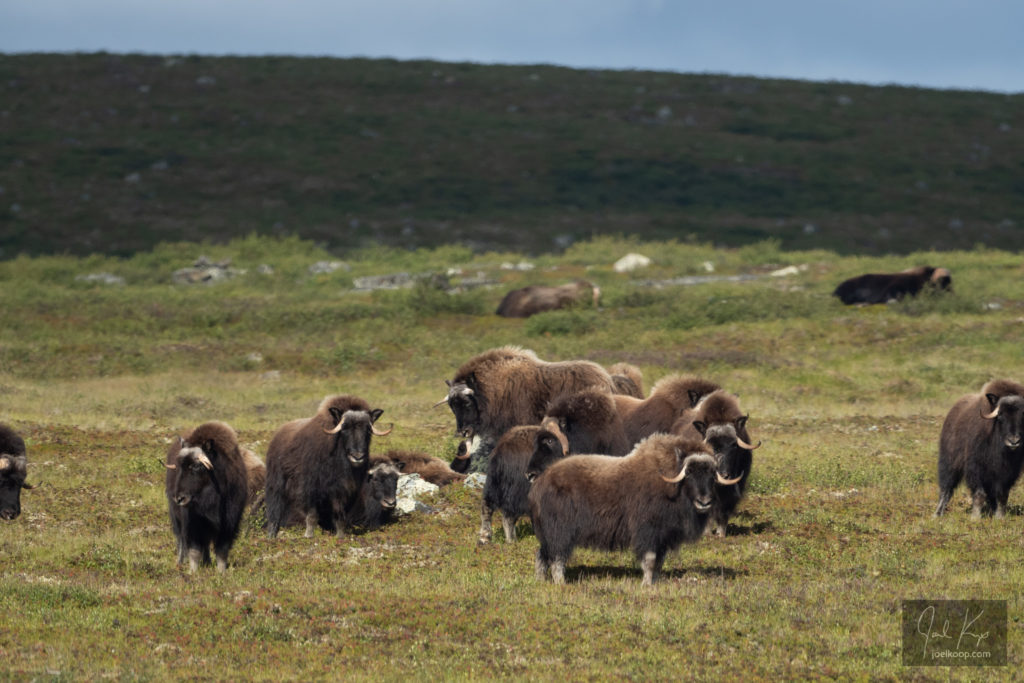
The largest herd we saw was more than 20 muskoxen on the shores of MacKay Lake. That was also when I got to hear the most impressive animal noise I’ve ever heard. As we were floating closer in our canoes, the dominant bull let out what can only be described as a rumble that I could feel as much as hear.
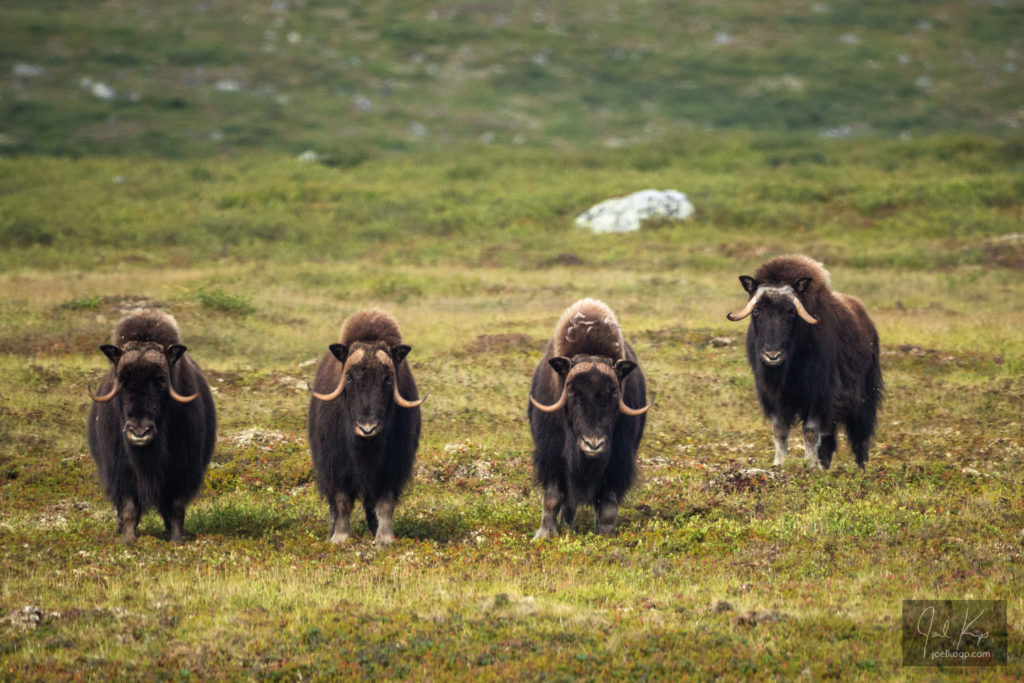
In the 1800s, muskox were almost extinct. They had been hunted by whalers, fur traders, explorers, and Inuit until there were almost none left. They were a good source of meat and fur, and were easy to hunt. Their defensive reaction is to line up in front of their young and charge if anything attacks. While that’s a great defense against wolves, it is a very poor defense against rifles. In 1917, the government of Canada banned hunting muskox, and in 1927, created the Thelon Game Sanctuary to help muskox populations recover. Now muskox populations are rising fast while the caribou populations are plummeting.
In 1897, Charles “Buffalo” Jones, a rich American, took it upon himself to go up north and lasso some young muskox to take back down south and breed in captivity. He saw it as his God-given duty to “have dominion over every living thing”. He went up north, built a cabin by Great Slave Lake to spend the winter in, and the next year found a herd out on the tundra. Against the wishes of the local people, he lassoed four calves and started to lead them south. One morning he woke up to find the four calves with their throats slit, with the knife left next to them. His mistake was a classic one – barging in without any understanding or respect. He sort of got the message and left the muskox alone, only to head out to an island in the Bering Sea to try to establish a breeding farm for Silver Foxes. His full story is maddening, fascinating, impressive, and ridiculous. This is a quick version.



